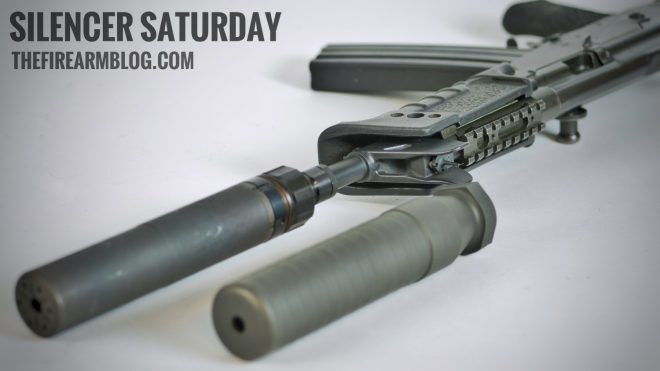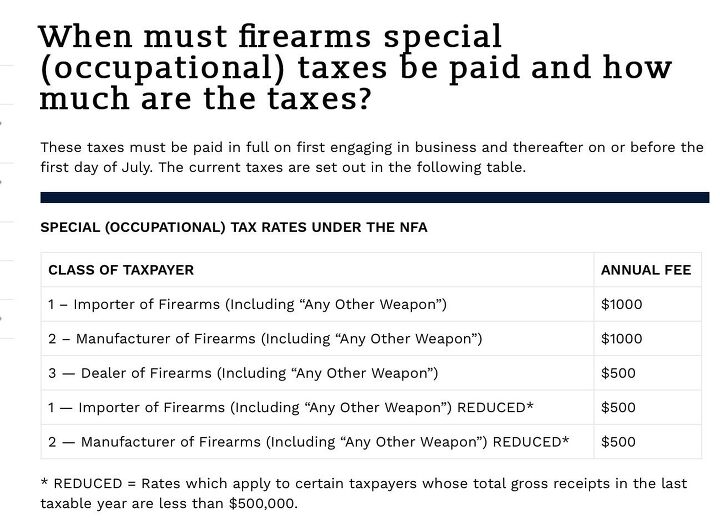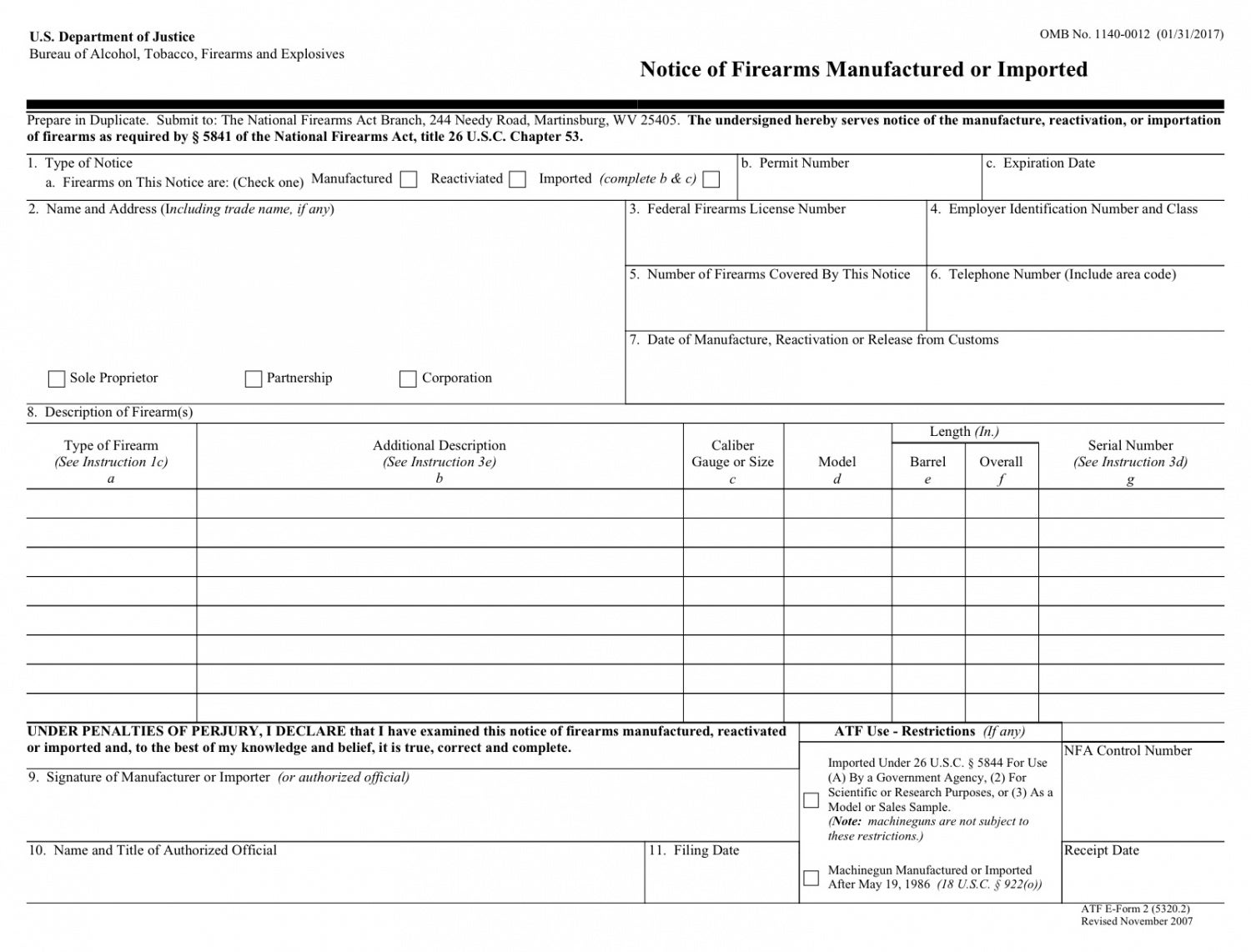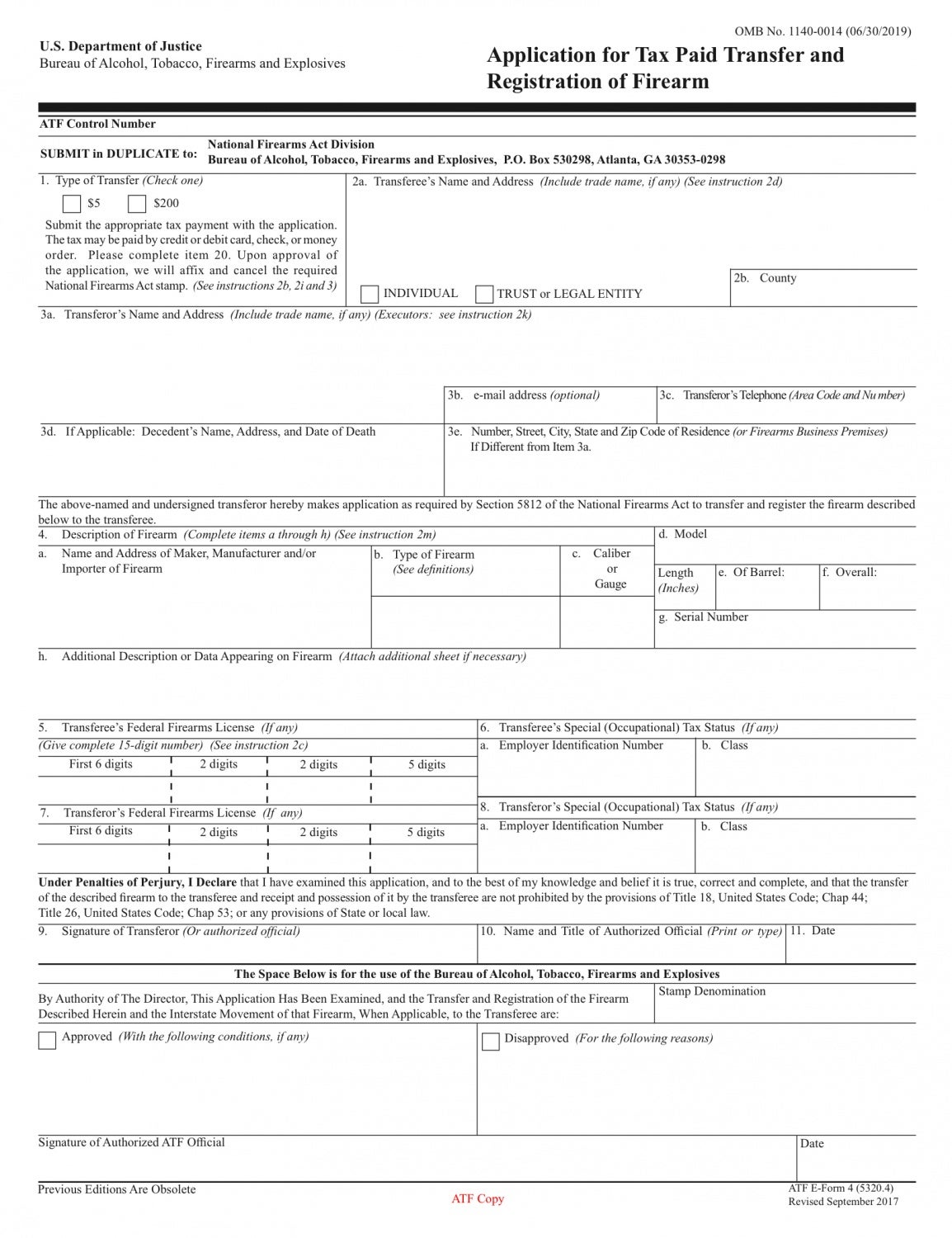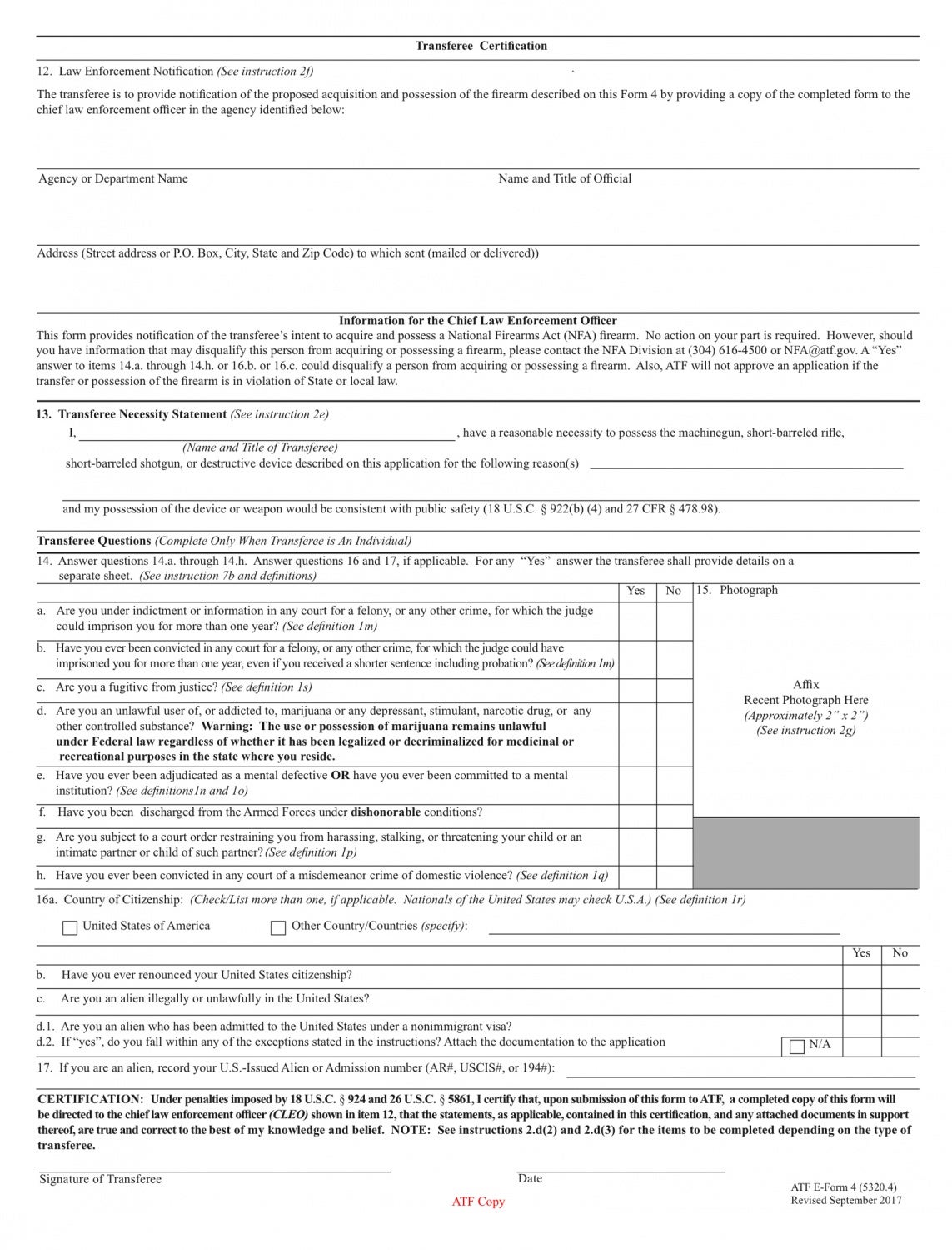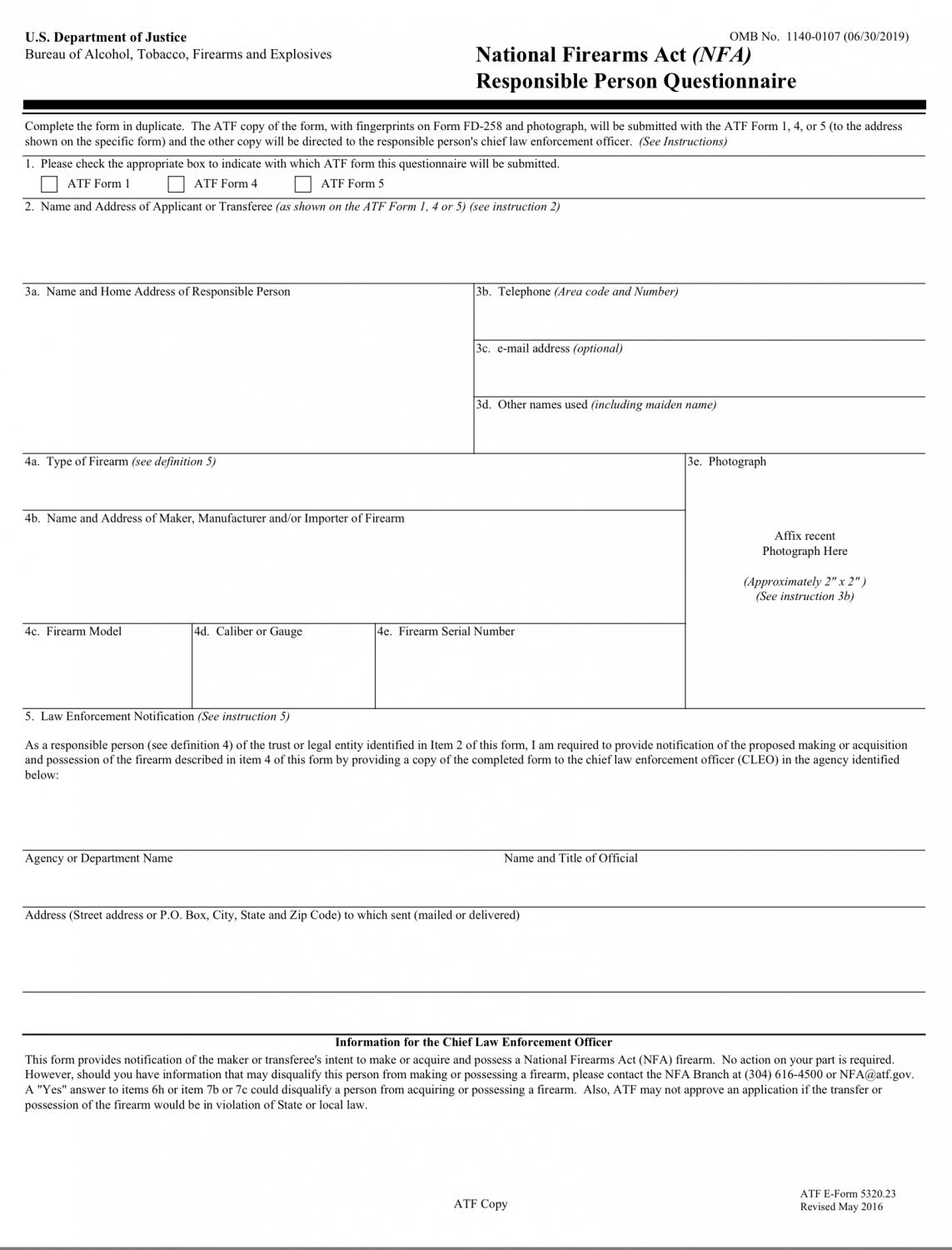Thanks for stopping by TFB’s Silencer Saturday, where the the loudest noises are voices in your head telling you to finally buy a suppressor. Today we will focus on demystifying the process of purchasing and transferring National Firearms Act (NFA) controlled firearms. Strange as it is, the simple tube on the end of all your friend’s guns is by law considered a firearm.
Because the process can seem daunting, especially for first time buyers, I thought we all could use a refresher on some of the basics of silencer and NFA ownership. In the past two years since we debuted TFB’s Beginner’s Guide To Suppressors series, a number of rules have changed in the way that NFA applications are completed, submitted and processed. It’s time for a much needed update and I promise to keep it as simple as possible.
So let’s take a look at the regulatory process of silencers from birth all the way to your barrel’s threads.
STOP!
Before you start reading the process outlined below and get overwhelmed, the majority of this information is provided only for background and does not require any work on your part.
Demystifying The NFA Process

I. Legal definition: What is a silencer?
It doesn’t matter if they don’t actually silence a firearm, in the eyes of the law, any device (or part of a device*) manufactured to reduce the report of a gunshot is a silencer. Sure, suppressor is technically a more accurate term, but legally, this will always be Silencer Saturday.
The term “Firearm Silencer” or “Firearm Muffler” means any device for silencing, muffling, or diminishing the report of a portable firearm, including any combination of parts, designed or redesigned, and intended for the use in assembling or fabricating a firearm silencer or firearm muffler, any part intended only for use in such assembly or fabrication. – ATF Gun Control Act definitions.
*Note: Oddly enough, not only are silencers controlled under the NFA, but parts of silencers are as well. Meaning, if you remove a baffle from one of your suppressors and carry it with you all day, by law you are traveling with a silencer. This is part of the reason that consumers are not allowed to purchase replacement parts for silencers – all repair work must be handled by an FFL holder.

II. Manufacturing vs making: The birth of a silencer
Starting out as raw materials like steel, aluminum and titanium, commercial silencers are manufactured by companies who possess a manufacturing federal firearms license. As simple as it seems, there is an important distinction here: Manufacturers build suppressors with the intent to sell them to customers. Makers, on the other hand, are individuals or legal entities who apply for an NFA Maker’s approval using an ATF Form 1, to make silencers only for personal use.
Licensing under the GCA. Persons intending to engage in the business of manufacturing NFA firearms that also meet the definition of “firearm” in the GCA must first apply for and obtain a GCA manufacturer’s license. The license application is ATF Form 7 (5310.12). – ATF – Manufacturing NFA Firearms
On top of a $150 license fee, dealers who choose to make, sell or transfer NFA items are also required to pay a Special Occupational Tax of $500 or $1000 per year.
As our fictional company “ACME Silencer” stamps, mills, turns and otherwise builds silencers, at some point a magical act occurs: what was once a tube with parts legally becomes an item under the control of the National Firearms Act Of 1934. Most often, this mile marker is marked by the application of a serial number to an outer tube or ring. At this point, ACME completes an ATF Form 2 – Notice of Firearms Manufactured or Imported.
III. Transfers between licensees: Off to distributors and dealers
Very few manufacturers sell their suppressors directly to consumers on a regular basis (you’d have to live in the same state anyway). Instead, just like standard Title I firearms manufacturers, ACME Silencer will sell different models to wholesalers, distributors and dealers. The difference between the transfer of an NFA firearm between licensed dealers and a “traditional” firearm is the paperwork. The ATF requires a completed and approved Form 3 before a silencer can transfer ownership/possession between license holders*. In the past, Form 3 approvals were taking as long as two to three months. Recently, however, the process to receive approval to transfer an NFA item between FFL holders is now averagering between 24-48 hours. Which is important, because the sooner your local dealer receives the silencer you want, the sooner you can start your transfer paperwork process.
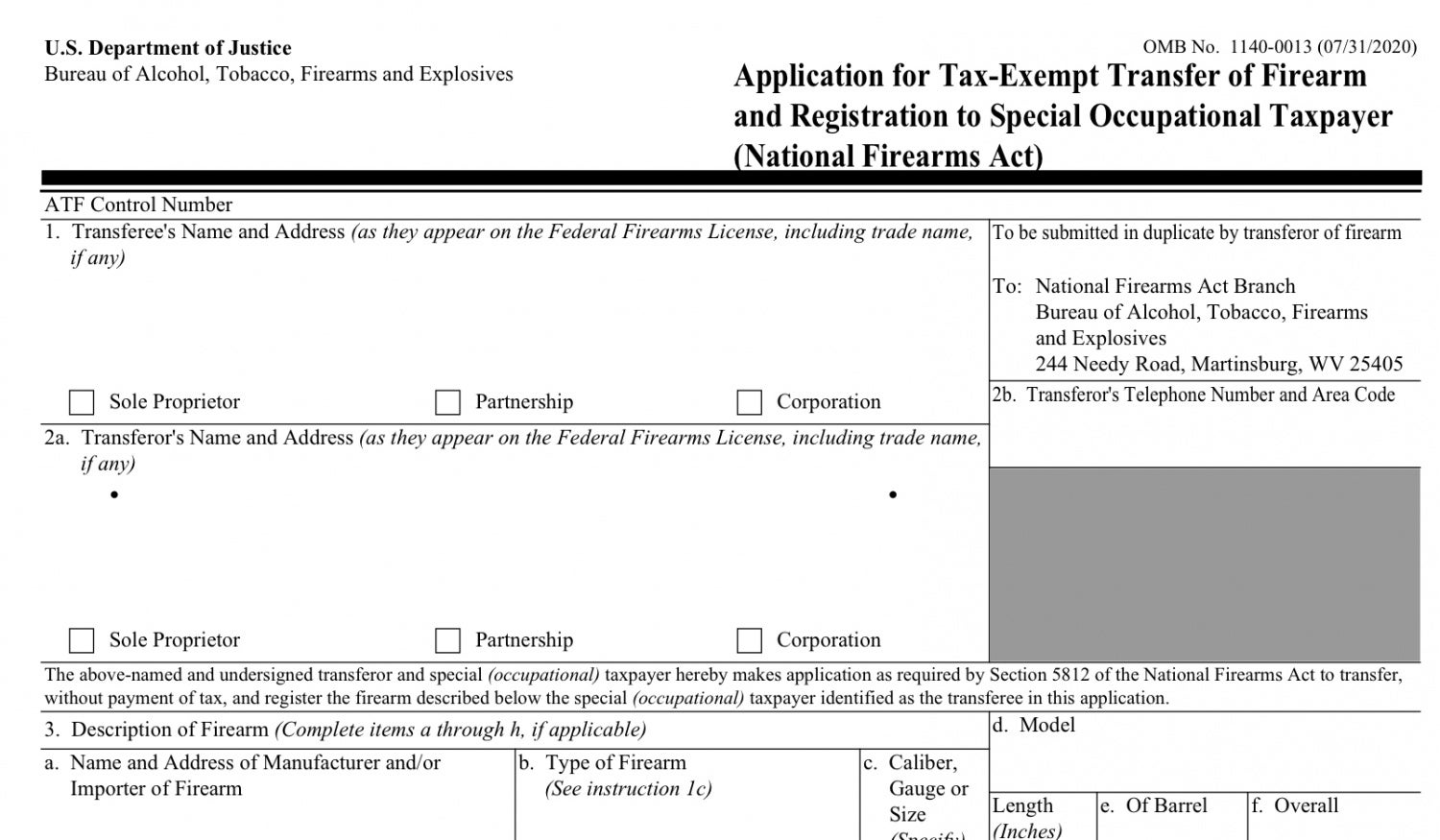
ATF Form 3: Application for Tax-Exempt Transfer of Firearm and Registration to Special Occupational Taxpayer
*Note: The transfer between licensed dealers is tax free, meaning that a $200 tax stamp is not required.

IV: Home Turf: Your Local FFL/SOT
Once your local dealer receives the silencer you ordered or is stocking models for you to choose from and then purchase, the final transfer process can begin. After paying for your suppressor, your dealer will help you complete the ATF Form 4 transfer paperwork. At this point, you will need to decide whether to file as an individual or as a legal entity such as a trust or corporation.
If filing as a legal entity, you will need to bring your trust or incorporation documents as well as complete a Responsible Persons Questionaire for each person in your entity (we will discuss this part more in a second).
The Form 4 itself is fairly self explanatory, asking for personal information, information about the silencer that is being transferred to you and payment options for the $200 transfer tax. Your dealer should complete most of the form for you.
Part of the Form 4 process involves submitting two passport-sized photographs and two blue “applicant” fingerprint cards. For the photos, you can either visit a passport photo service location like a drugstore, or take the picture yourself. There a several passport photo mobile apps on either the iOS or Android platforms that are both free and easy to use.
Your dealer should have fingerprint cards available and will either roll your prints at the shop or suggest a place like a police department to have your prints rolled, usually for a small fee. In reality, it is a simple process to roll your own fingerprints, with plenty of how-to videos on YouTube to follow along.
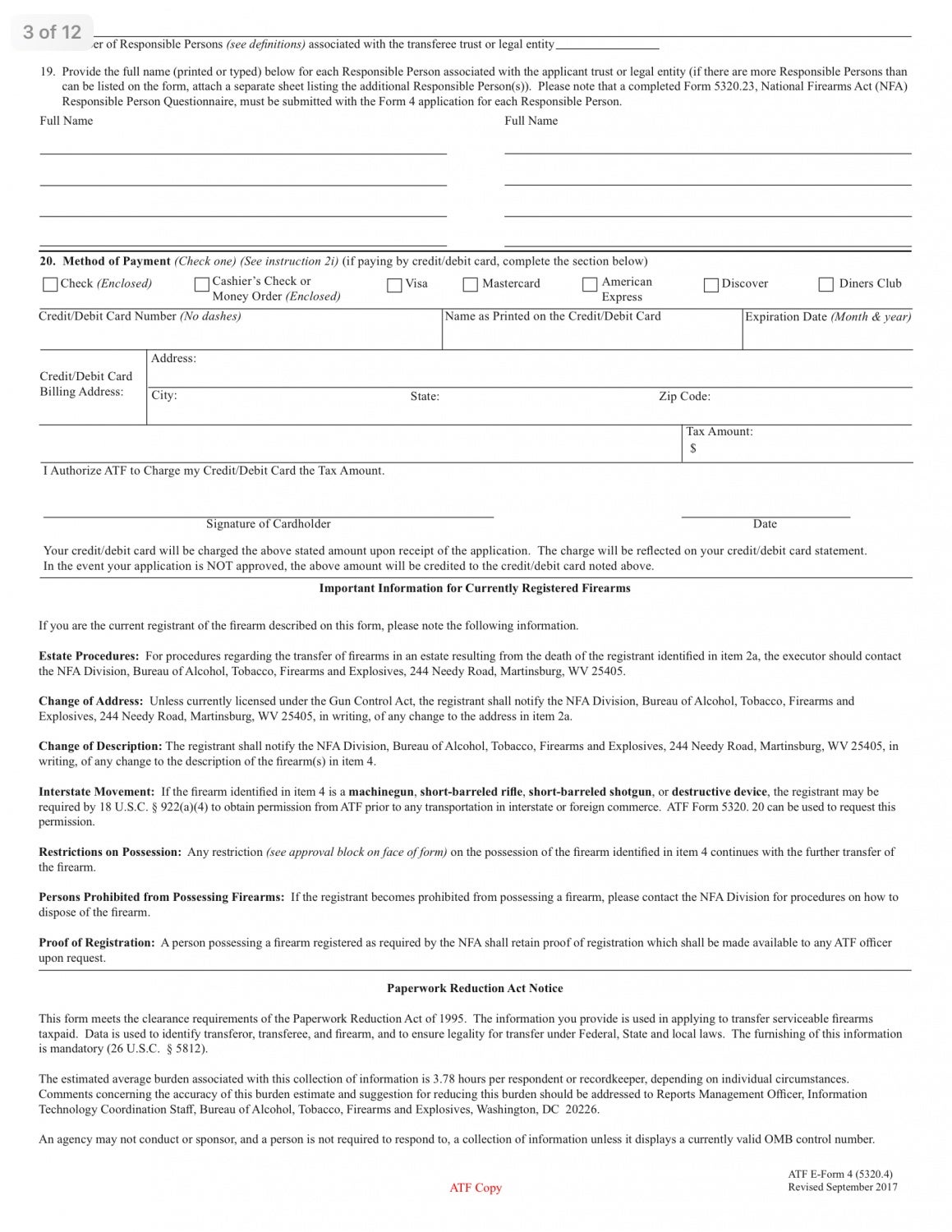
ATF Form 4 – Application For Tax Paid Transfer And Registration Of Firearm – PAGE 3
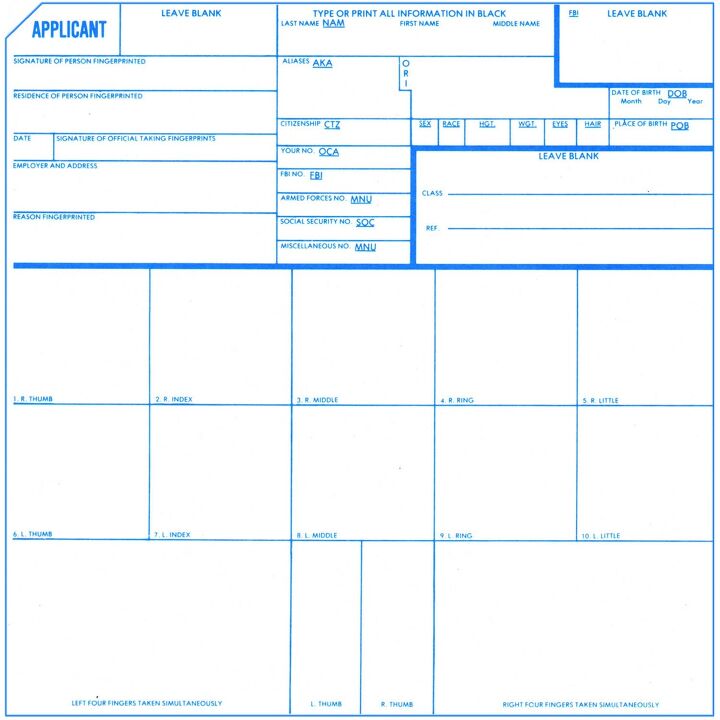
Applicant Fingerprint Card
If you are completing the Form 4 application on behalf of an entity, such as a trust, each responsible person must complete a Responsible Person Questionnaire and also a photograph and fingerprint cards as part of the submission. Who is a Responsible Person?
Responsible Person.
In the case of an unlicensed entity, including any trust, partnership, association, company (including any Limited Liability company (LLC)), or corporation, any individual who possesses, directly or indirectly, the power or authority to direct the management and policies of the trust or entity to receive, possess or ship, transport, deliver, transfer or otherwise dispose of a firearm for, or on behalf of, the trust or legal entity. In the case of a trust, those persons with the power or authority to direct the management and policies of the trust includes any person who has the capability to exercise such power and possesses, directly or indirectly, the power or authority under any trust instrument, or under State law, to receive, possess, ship, transport, deliver, transfer, or otherwise dispose of a firearm for, or on behalf of the trust. Examples of who may be considered a responsible person include settlors/grantors, trustees, partners, members, officers, directors, board members or owners. An example of who may be excluded from this definition of responsible person is the beneficiary of a trust, if the beneficiary does not have the capability to exercise the enumerated powers or authorities. –ATF Responsible Person Questionnaire, Page 5, Definition 4
After all is said and done, you will end up with the following completed paperwork:
- Three (3) completed and signed copies of the ATF Form 4.
- Two (2) are sent to the ATF and one is sent as a notice to your Chief Law Enforcement Officer (CLEO). The CLEO can be a local state or even federal authority in your state that has responsibilities over your your residence location – just pick one.
- Two (2) completed and signed Fingerprint Cards.
- Two passport-sized photographs attached to either the Form 4 application (Individual) or one (1) attached to the Responsible Person Questionnaire (entity).
- A copy of your entity information – trust or incorporation documents (filing as an entity only).
Common mistakes, errors or omissions:
- Forgetting to sign the Form 4, Fingerprint Card and/or Responsible Person Questionnaire.
- Forgetting to include payment information.
- Forgetting to submit a complete Responsible Persons Questionnaire for every responsible person listed in your trust or incorporation documents.
- Forgetting to send two copies of the Form 4
- Forgetting to attach photographs to the Form 4 or Responsible Person Questionnaire
Drop ALL of your paperwork and payment into a USPS Priority envelope (I recommend this service for the tracking number) and send it to the following address:
National Firearms Act Division
Bureau of Alcohol, Tobacco, Firearms and Explosives
P.O. Box 530298
Atlanta, GA 30353-0298

V. Sit back and wait
This is arguably the hardest part of the whole process, so I have two suggestions. The first is to try and forget about your silencer transfer – agonizing over every day that your dealer doesn’t call is both painful and unproductive. Second, as you continue to order new silencers, the staggered wait times allows you to receive a surprise transfer at different intervals. It’s like a twisted government-forced Christmas!

VI. Finally: Your Dealer calls, texts, emails To Say Your Paperwork Is Back
Congratulations! Your forms are back and you can go pickup your new silencer. Before you leave, you will be required to complete a standard Form 4473 Firearms Transaction Record. However, since the ATF has already completed the background check, your dealer doesn’t need to call your information into the National Instant Criminal Background Check System (NICS Check).
There is a small chance that you have forgotten to complete a section of the paperwork and instead of an approval, the ATF has sent your forms back for a correction. Don’t panic, your dealer should help you fix any errors, then you will send everything back for approval, which usually only takes two weeks.
Now you are finally ready to take your new suppressor home.

VII. Your Silencer And You
People tend to freak out about storage and possession requirements when it comes to NFA items, so allow me to put most of your fears at ease. Most of the rules regarding the ownership of your new silencer are common sense.
1. Use a secure storage solution to keep it out of the hands of others.
2. If you filed as an individual, you must be physically present whenever the silencer is used by anyone else (you maintain possession).
3. If you filed as an entity, any of the responsible persons on your trust or incorporation documents can possess the silencer as long as they have not become a prohibited individual (people get arrested, etc).
4. Repairs or warranty work must be completed by a licensed individual (you can’t fix your own silencer).

VIII. Other Purchasing/Transfer Options:
Once you complete the above process for the first time, you will realize that it really isn’t that bad. And if you picked the right silencer for your needs, you will also realize that it was worth the wait.
However, some dealers/distributors have come up with innovative ways to avoid most of the work that goes into the purchase and transfer process. For example, Silencer Shop, an NFA distributor, has partnered with a network of dealers around the country to provide buyers with easier processes to buy a suppressor online and get it transferred to you through your local dealer.
- Electronic fingerprint scanning at a participating dealers (you can also send in fingerprint cards to be scanned).
- A mobile app to take and submit a passport photograph.
- Online submission of Form 4, Responsible Person, and entity documents
- Pay your $200 NFA tax online at the time you buy your silencer.
- Buy/Transfer any silencer out of your dealers inventory.
Basically, after one visit to a dealer to scan your fingerprints, you never have to fill out a form or mail anything to the ATF unless there are changes to your information or trust/corporation.
Silencer Shop explains the process here.
Whatever method you choose, hopefully you realize that the (ridiculous) process to own a silencer eventually makes shooting your firearms that much more enjoyable.
See you next week.

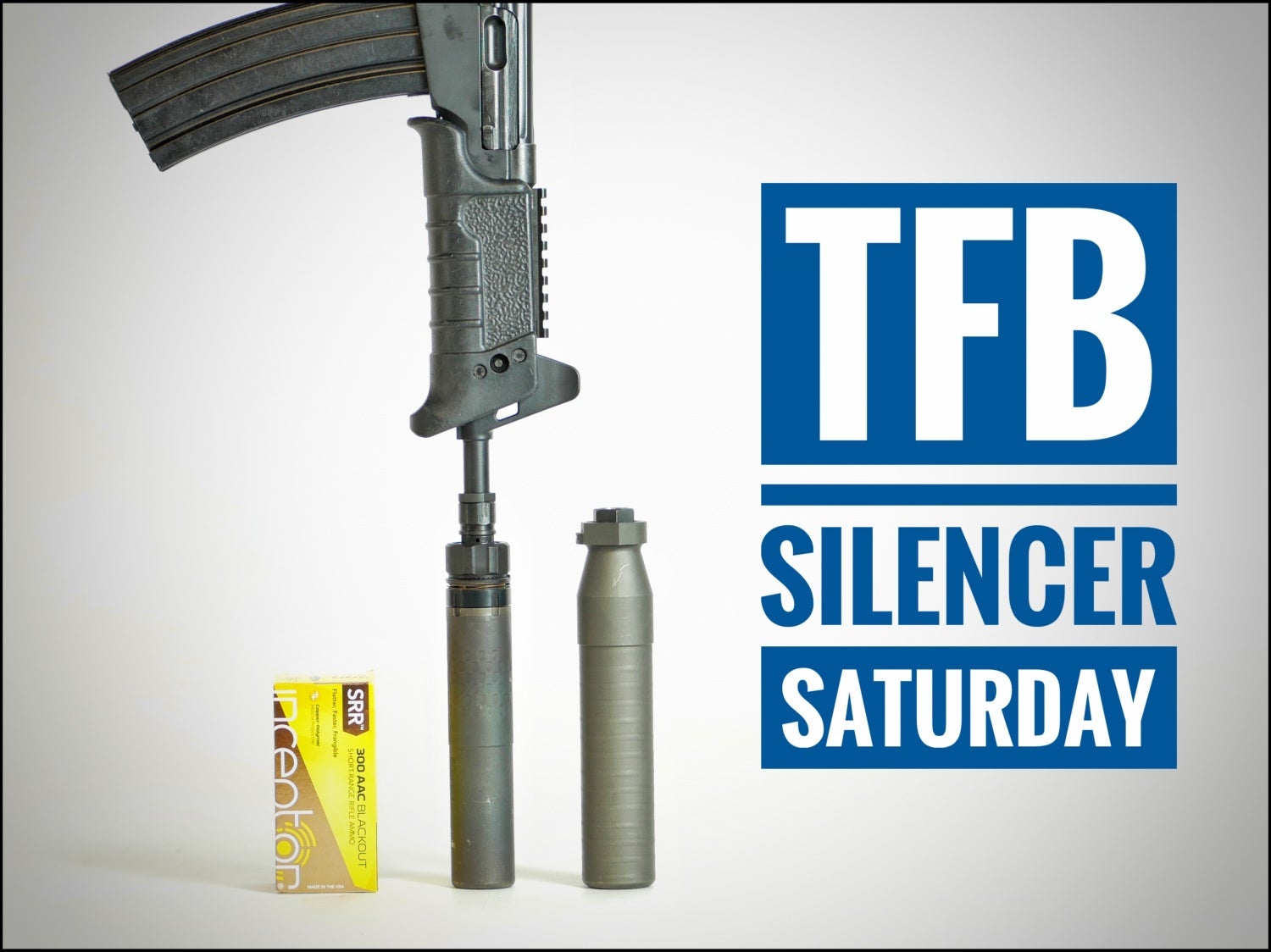
More information about the title image (TFB Reviews In Process):
 Your Privacy Choices
Your Privacy Choices
